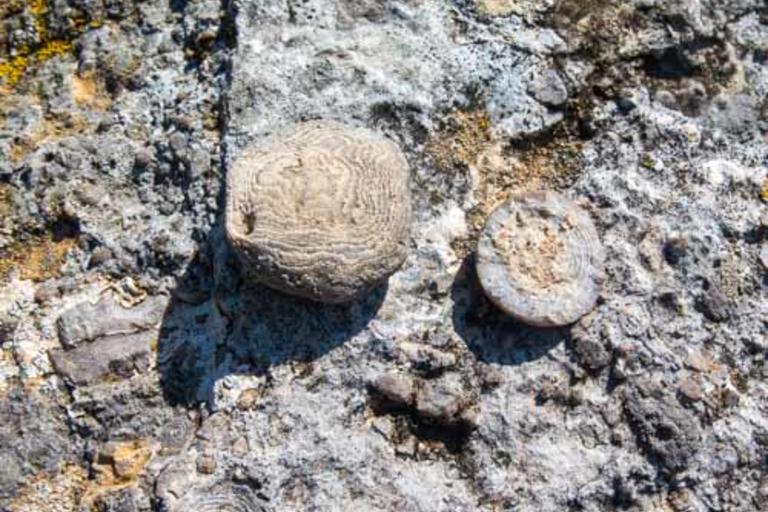
Introduction
Nummulites or "dinerets" (money coins)
In the landscape of Tavertet, the cliffs especially attract our attention, for their beauty, but also for their imposing verticality.
In the strata that make it up, we can easily distinguish two parts, one made up of reddish tones with materials from the Eocene, of continental origin (the reddish color is due to the presence of oxygen during its formation), and above another stratum greyish in color made up of marls, limestones and sandstones of marine origin. The differential erosion between hard and soft rocks has given rise to this relief in the form of a plain with cliffs that we can also see in the Lighthouse area.
The marine origin of the rocks we walk on makes it easy to find fossils such as these small lentils that we find on the ground at this point. These are nummulites, also known as lentils or "dinerets" (money coins). It is a single-celled animal or protozoan that grew in shallow marine areas.
Nummulites are part of the stone in the Great Pyramid of Giza. They are mentioned for the first time in ancient Greek texts: "Dinerets" money coins was considered to be the stone-turned remains of the lentils eaten by the builders of the pyramids.